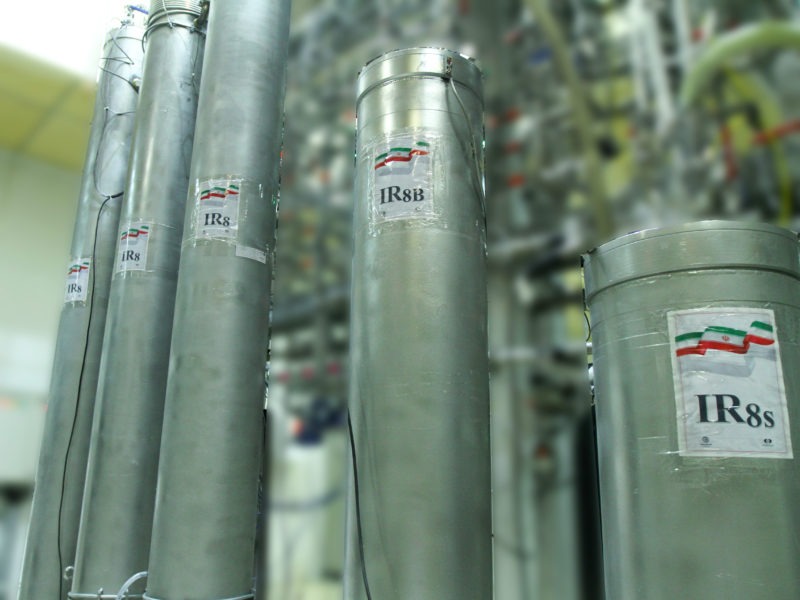Spotlight returns to Iran’s nuclear programme
Latest revelations may lead to heated exchanges over Iran at the upcoming board meeting of the UN’s nuclear watchdog (HO)
Vienna (AFP) – Tehran’s nuclear programme is back under the spotlight after the UN’s nuclear watchdog revealed the extent of Iran’s uranium enrichment drive and reprimanded it for denying access to two locations.
The revelations may lead to heated exchanges at the International Atomic Energy Agency’s (IAEA) latest quarterly board of governors meeting which starts on Monday in Vienna.
– Which limits is Iran breaking? –
Since May 2019, Iran has announced successive breaches of the deal struck four years earlier with world powers which restricted its nuclear programme in exchange for sanctions relief.
The breaches were in reaction to US President Donald Trump’s withdrawal from the agreement in 2018 and reimposition of harsh sanctions on Iran.
The latest announcement came in January, when Iran said it was no longer bound by any restrictions on its nuclear programme.
An IAEA report issued on 3 March said that the announcement itself did not lead to any noticeable changes, but also revealed the cumulative effect of Iran’s previous breaches.
There has been a dramatic increase in Iran’s uranium stockpile, which now stands at over 1,000 kilogrammes — more than five times the limit fixed in the deal.
The centrifuges being used for enrichment are also more numerous and more advanced than foreseen under the deal.
Experts say the latest developments mean Iran’s so-called “breakout time” (the period needed to acquire the weapons-grade fissile material for a bomb) may well have fallen to a matter of months.
The 2015 deal was meant to ensure the breakout time was at least a year.
However, diplomats caution that none of the current stockpile is enriched beyond 4.5 percent, with much of it at a lower level than that.
It would need to be enriched to roughly 90 percent for use in a bomb, not to mention all the other work required to produce a weapon.
Moreover, the IAEA’s extensive monitoring of Iran’s current nuclear activities — often cited as an achievement of the 2015 deal — is continuing.
Iran insists its nuclear programme is purely for civilian ends.
– Why were two inspections refused? –
In a second report the IAEA issued last week it reprimanded Iran for barring inspections at two sites.
They are among three locations about which the IAEA said it had questions over “possible undeclared nuclear material and nuclear-related activities”.
However, diplomatic sources say these activities date back to the 2000s and do not directly relate to Iran’s current programme.
The amounts of material concerned are not significant and the agency’s queries should not be difficult to answer, diplomats say.
“I’m sure that if they got access to these sites, they wouldn’t find much,” France’s former ambassador to Tehran Francois Nicoullaud told AFP.
“The IAEA is a technical agency so it has the obligation to clear up this question,” he added, saying the agency “doesn’t have much room for manoeuvre”.
Nevertheless Iran reacted sharply, telling the IAEA that it does “not recognize any allegation on past activities”.
In a subsequent statement Iran said “intelligence services’ fabricated information… creates no obligation for Iran to consider such requests” and accused the US and Israel of trying to pressure the watchdog.
Israel has claimed that a trove of information obtained by its intelligence services contains new detail on a previous Iranian nuclear weapons programme.
– Have there been other tensions? –
In October an IAEA inspector was briefly prevented from leaving Iran after authorities said she triggered an alarm at the Natanz uranium enrichment plant.
The IAEA said the incident was “not acceptable”.
The rows over the inspector and the agency’s unanswered questions have highlighted potential friction between the IAEA and Iran.
At a special IAEA board meeting in November, Iran warned the agency — and unnamed member states — to avoid “aggrandizing” issues unnecessarily, adding that this could “have a detrimental effect on ongoing cooperation”.
And in a January move which added to the already strained atmosphere, the European parties to the 2015 accord — France, Germany and the UK — launched the deal’s dispute resolution mechanism in protest at Iran’s breaches.
Disclaimer: Validity of the above story is for 7 Days from original date of publishing. Source: AFP.


